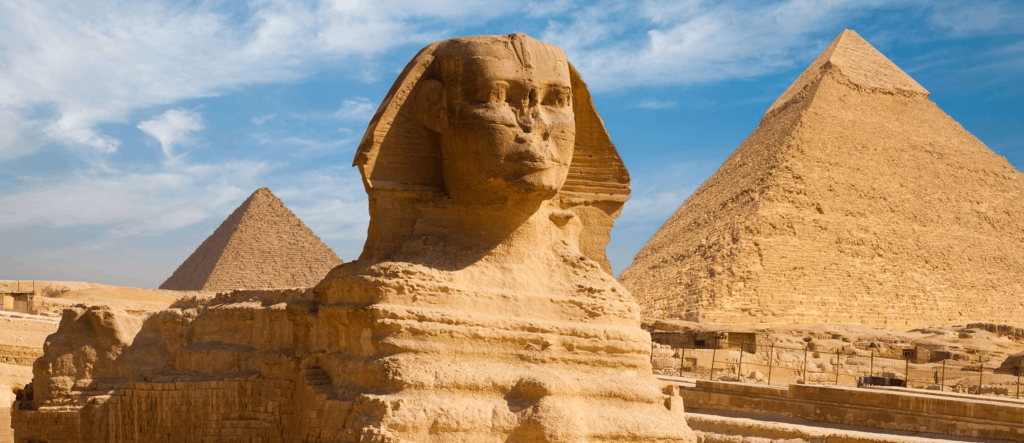The Pyramids of Giza stand as timeless icons of ancient Egypt, captivating travelers and historians alike. These magnificent structures symbolize ingenuity, spirituality, and the enduring legacy of the Pharaohs. Located near Cairo, the site attracts millions of visitors each year, offering a glimpse into an advanced civilization that flourished thousands of years ago.
A Masterpiece of Ancient Engineering
The construction of the pyramids reflects the remarkable skills of ancient Egyptian architects and laborers. Built primarily as tombs for pharaohs, they showcase a blend of innovation and dedication. The Great Pyramid, attributed to Pharaoh Khufu, remains the largest and most renowned. Its precise alignment with celestial bodies highlights the advanced understanding of astronomy held by its creators.
Moreover, the use of massive limestone blocks, transported from quarries across the Nile, demonstrates the extraordinary logistical efforts required. Each block was meticulously positioned, forming the triangular structures that have withstood centuries of natural and human challenges.
Cultural and Religious Significance
The Pyramids of Giza were more than monumental tombs. They embodied the Egyptians’ belief in the afterlife and the divine nature of their rulers. Each pyramid was part of a larger complex, including temples and causeways, designed to honor the deceased and ensure their safe journey to the afterlife.
The Great Sphinx, another marvel at the site, stands as a guardian of these sacred monuments. Carved from a single limestone block, it is believed to symbolize strength and wisdom, adding layers of meaning to the already profound legacy of Giza.

The Enduring Mystery of the Pyramids
Despite extensive research, many aspects of the pyramids remain shrouded in mystery. How were the immense stones transported and positioned so precisely? What tools and techniques were used? These questions continue to inspire debate and fascination among scholars and enthusiasts.
Modern technology, including satellite imagery and ground-penetrating radar, has provided new insights. Yet, the exact methods remain elusive, preserving the allure of these ancient wonders.
Visiting the Pyramids Today
Exploring the Pyramids of Giza offers an unforgettable experience. Visitors can marvel at the sheer scale of the structures, explore nearby museums housing artifacts, and even venture into the inner chambers of some pyramids. The panoramic views of the surrounding desert and Cairo’s skyline add to the magical atmosphere.
Local guides enhance the experience by sharing stories and historical insights, helping visitors connect with the grandeur of ancient Egypt. To make the most of your visit, consider planning during cooler months and starting early to avoid crowds.
A Global Icon of Heritage
The Pyramids of Giza are not just an Egyptian treasure; they are a global symbol of cultural heritage. Designated as a UNESCO World Heritage site, they serve as a reminder of human achievement and resilience. Efforts to preserve the site ensure that future generations can continue to admire these incredible monuments.
Conclusion
The Pyramids of Giza remain a testament to the creativity, spirituality, and determination of ancient Egypt. They inspire awe and curiosity, bridging the gap between the past and the present. Whether viewed as architectural marvels or historical landmarks, they offer insights into a civilization that shaped the course of human history.
